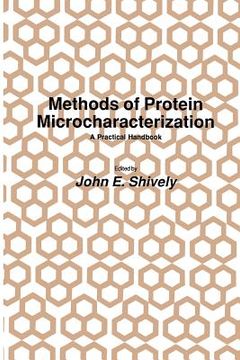Share
Methods of Protein Microcharacterization: A Practical Handbook (in English)
John E. Shively
(Author)
·
Humana
· Paperback
Methods of Protein Microcharacterization: A Practical Handbook (in English) - Shively, John E.
$ 104.20
$ 109.99
You save: $ 5.79
Choose the list to add your product or create one New List
✓ Product added successfully to the Wishlist.
Go to My WishlistsIt will be shipped from our warehouse between
Monday, July 15 and
Tuesday, July 16.
You will receive it anywhere in United States between 1 and 3 business days after shipment.
Synopsis "Methods of Protein Microcharacterization: A Practical Handbook (in English)"
Milestones in the techniques and methodology of polypeptide structure determination include the determination of the sequence of insulin by Sanger in 1951 (I) and the introduction of the repeti- tive degradation of proteins with phenylisothiocyanate by Edman in 1959 (2). The automation of Edman chemistry (3) played a major role in the determination of polypeptide structures. Important modifications of Edman chemistry include the solid-phase approach by Laursen in 1971 (4) and the use of modified Edman reagents such as 4-N, N-dimethylaminoazobenzene-4'-isothiocy- ate (DABITC) for manual sequencing by Chang et al. (5) in 1976. A second major breakthrough in the analysis of polypeptides was automated amino acid analysis described by Spackman et al. in 1958 (6). However, during the period from 1975 to 1980, it became increasingly clear that the amount of material required for struc- tural analysis was more than could be easily isolated for the vast majority of proteins. The field was criticized for its lack of sensitive techniques for the analysis of growth factors, immune modulators, membrane receptors, and peptide hormones. In addition, very little had been done to modernize and improve the original instruments introduced in the mid-1960s. The first indications of improved instrumentation for Edman chemistry came from Wittmann-Liebold's laboratory (7), followed by the introduction of a "micro" sequencer by Hunkapiller and Hood in 1978 (8). The movement toward improved instrumentation culminated in the "gas"-phase sequencer of Hewick et al. (9) in 1981.
- 0% (0)
- 0% (0)
- 0% (0)
- 0% (0)
- 0% (0)
All books in our catalog are Original.
The book is written in English.
The binding of this edition is Paperback.
✓ Producto agregado correctamente al carro, Ir a Pagar.

